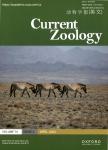Prime waterfront real estate: Apple snails choose wild taro for oviposition sites
Prime waterfront real estate: Apple snails choose wild taro for oviposition sites作者机构:Department of Ecology and Evolution University of Chicago Chicago IL 60637 USA Department of Biology Southwestern University Georgetown TX 78626 USA
出 版 物:《Current Zoology》 (动物学报(英文版))
年 卷 期:2011年第57卷第5期
页 面:630-641页
核心收录:
学科分类:0710[理学-生物学] 090801[农学-水产养殖] 0908[农学-水产] 0905[农学-畜牧学] 0906[农学-兽医学] 09[农学] 0902[农学-园艺学] 090202[农学-蔬菜学]
基 金:Southwestern University Texas Academy of Science
主 题:福寿螺 芋头 野生 房地产 网站 产卵 海滨 外来入侵物种
摘 要:While difficult to prevent introductions, scientific research can help guide control efforts of exotic, invasive species. South American island apple snailsPomacea insularumhave quickly spread across the United States Gulf Coast and few control measures exist to delay their spread. Usually occupying cryptic benthic habitats, female apple snails crawl out of the water to deposit large, bright pink egg clutches on emergent objects. To help identify the most likely place to find and remove clutches, we conducted four lab experiments to investigate what specific object qualities (i.e. material; shape and height; plant species; natural and artificial) attractedP. insularumfemales to lay clutches. In our fourth experiment, we specifically examined the relationship between female size and reproductive output. To further understand reproductive output, we quantified experimental clutch characteristics (height above water, dimensions, mass, approximate volume, number of eggs, hatching efficiency).Pomacea insu-larumfemales laid more clutches on plant material, chose round over flat surfaces and failed to differentiate between tall and short structures. In comparison to a common native plant in the eastern US,Pontederia cordata, snails clearly preferred to lay clutches on a widely distributed exotic, invasive plant (wild taro,Colocasia esculenta). Unexpectedly, smaller snails showed higher overall total fecundity as well as more eggs per clutch than larger snails. Therefore, hand removal efforts of large females may not be enough to slow down clutch production. Collectively, our results indicate that conservationists and managers should search emergent plants forP. insularumclutches carefully to guard against established populations.



